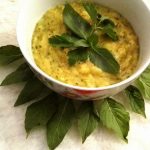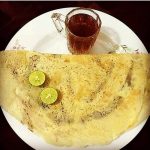Qeshm Food
Food can represent the rich customs and traditions of a region, and eating a delicious local meal can create a sweet memory for the tourist. Thus, most of the people are interested in trying traditional dishes when they travel to a new destination. Qeshm Island is one of the top tourist destinations in Iran, which combines tradition and natural beauty. The indigenous people of this island have delicious local food that shows their antiquity and ancient culture. Moreover, Qeshm’s traditional cuisine is a symbol of the region’s geographical and coastal location. On the one hand, most of these foods are made from fish and other sea creatures. On the other hand, due to the long-time relationship between the island’s inhabitants and the Indians, diverse kinds of Qeshm food taste like Indian dishes. In other words, the local cuisine in Qeshm is flavored with different types of spices.
Here we, as locals, introduce you to the different kinds of traditional Qeshm food, their ingredients, and approximate prices.
Also, you can get more information about the most popular Iranian dishes and their approximate prices on the Persian Food and Drink page.
Qeshm Food & Drinks Menu
* The prices are rough and based on a qualified dish served in a popular traditional restaurant in major cities. Usually, the prices are a little lower in casual dining restaurants and in small towns.
-
 Kolumba $4
Kolumba $4Fish, Wheat, Coriander, Dill, Turmeric, Spices
-
 Mahi Bereshteh (Roasted fish) $6
Mahi Bereshteh (Roasted fish) $6Sangsar (Javelingrunter or Striped piggy), Sorkhoo (Blackspot Snapper) or other kinds of Fishes, Coriander, Dill, Onion, Pepper. Spices, Herbs
-
 Puddini Koose $5
Puddini Koose $5Shark or Flounder, Aromatic Herbs, Onions, Garlic, Tomato Paste, Dried Lemon, Turmeric, Spices
-
 Mahyaveh (Mahveh) $3
Mahyaveh (Mahveh) $3Sardines, Coriander, Wheat, Barley, Mustard, Turmeric, Pepper, Salt
-
 Tomoshi Bread $1
Tomoshi Bread $1Flour, Oil, Egg, Salt
Kolumba
Kolumba is a traditional Qeshm food that contains wheat, fish, vegetables (chopped coriander and dill). To prepare this dish, the island’s locals boil the wheat in water and simultaneously boil the fish separately with turmeric and salt. They cook the fish until they can separate the bone easily. Then they mix the fish meat with the vegetables and add to the boiling wheat mixture. Afterward, they cook the mixture for a couple of hours and finally serve it with local bread. Traditionally, the island’s inhabitants prepare Kolumba with animal oil that is called “Jounun” (good oil) in the local language.
Ingredients: Fish, Wheat, Coriander, Dill, Turmeric, Spices


Mahi Bereshteh (Roasted fish)
Mahi Bereshteh or “Kabab Zoghali” is a local Qeshm food. The Persian word “Bereshteh” means “Roasted”. Although the roasted fish looks quite simple, the special spices and aromatic herbs give this dish a unique taste. Typically, the fish used in this food is Sangsar (Javelingrunter or Striped piggy) or Sorkhoo (Blackspot snapper). In one of this food’s cooking style, they empty the abdomen of the fish and fill it with onions, spices, and aromatic herbs. Finally, the locals roast the fish on a gas or charcoal fire. Traditionally, the date is the dessert that suits Mahi Bereshte.
Ingredients: Sangsar (Javelingrunter or Striped piggy), Sorkhoo (Blackspot Snapper) or other kinds of Fishes, Coriander, Dill, Onion, Pepper. Spices, Herbs
Puddini Koose
The Persian word “Koose” means “Shark” which is one of the fish caught by Qeshm Island’s fishermen. As a result, “Puddini Koos” is a traditional Qeshm food that contains the meat of Shark or Flounder. You can find this food on almost all the restaurants’ menus on the island. To prepare the dish, first, They boil shark meat with some salt, turmeric, and other spices. Then, they roast it with aromatic herbs, onions, garlic, tomato paste, dried lemon, and spices. Notably, sometimes the locals cook this dish with “Sofre Mahi” ( Flounder or Flatfish).
Ingredients: Shark or Flounder, Aromatic Herbs, Onions, Garlic, Tomato Paste, Dried Lemon, Turmeric, Spices


Mahyaveh (Mahveh)
Mahyaveh also called Mahveh or Mahiabeh, is a traditional Qeshm food served as a hot and spicy appetizer. Also, this local dish is served in Southern cities of Iran such as Larestan and Jahrom. To prepare Mahyaveh, the locals dry the small fishes such as Sardine under the sun. Afterward, they squish the dried fishes and mixed them with coriander, wheat, barley, mustard, turmeric, and pepper. Finally, they blend the mixture in the water and salt and place it in a special jar exposed to the sun for 20 to 30 days. Traditionally, they serve Mahyaveh with local bread.
Ingredients: Sardines, Coriander, Wheat, Barley, Mustard, Turmeric, Pepper, Salt
Tomoshi Bread
In the old days, people of Qeshm Island used to make their own bread in the houses. But today, that there are bakeries in the city the native people of Qeshm cook homemade bread only during Ramadan. However, you can find the traditional bread in the bakeries and restaurants of the island. Tomoshi is a conventional bread exclusive to the Persian Gulf Island’s inhabitants, particularly the people of Qeshm. It is a kind of thin flatbread that traditionally served with Mahyaveh. OR you can order this local bread with a cup of tea for breakfast.
Ingredients: Flour, Oil, Egg, Salt

